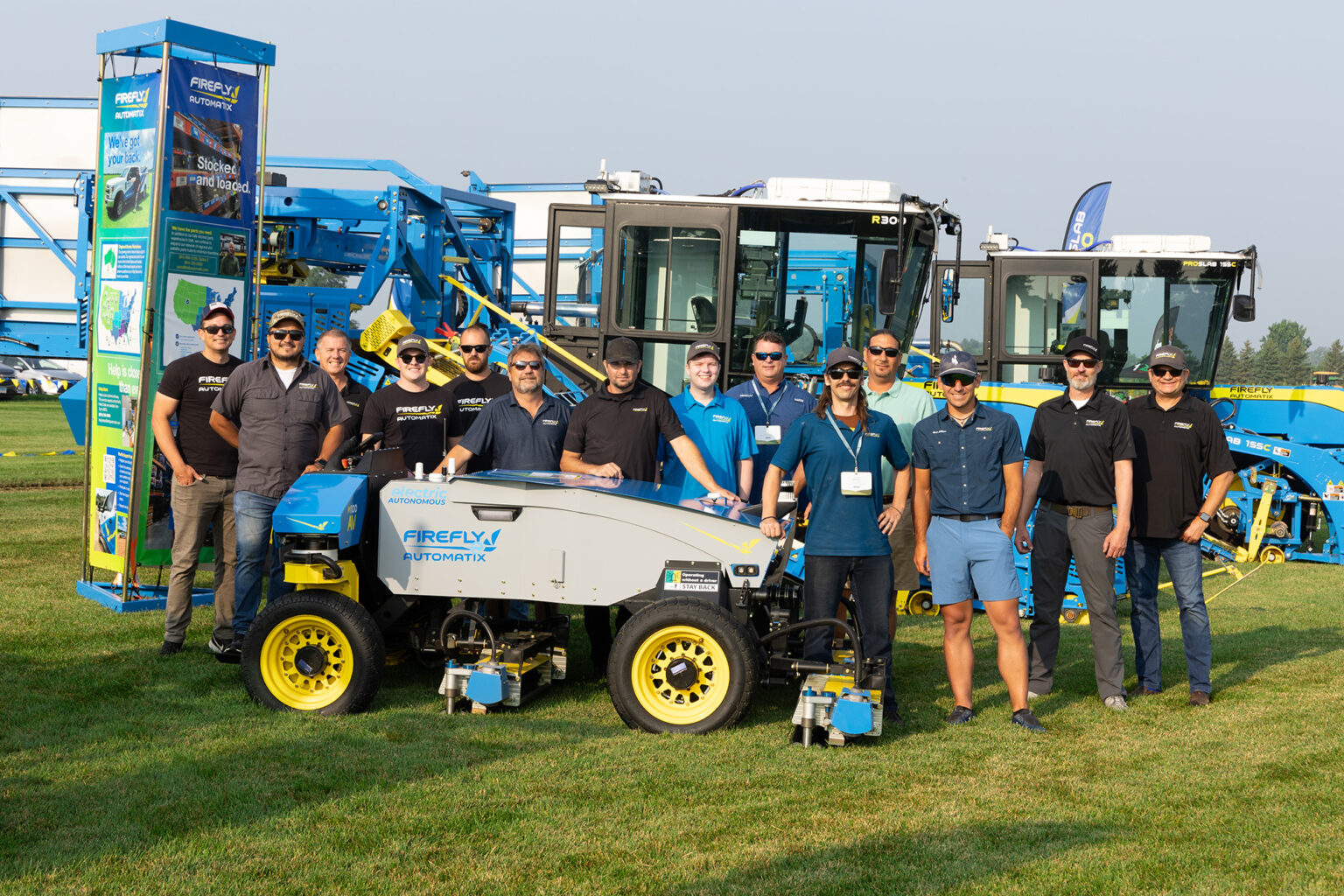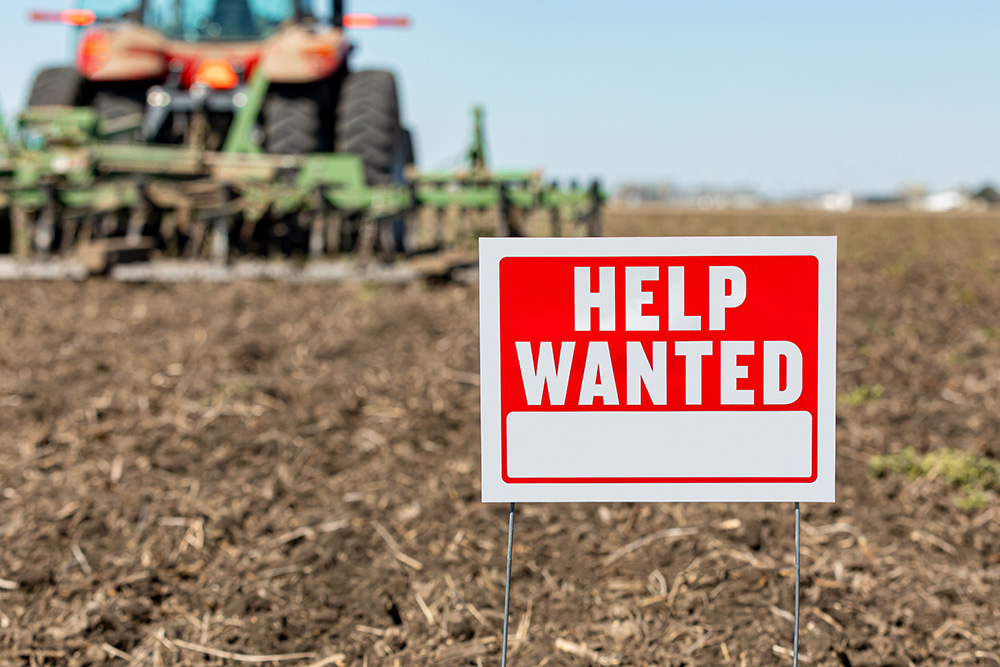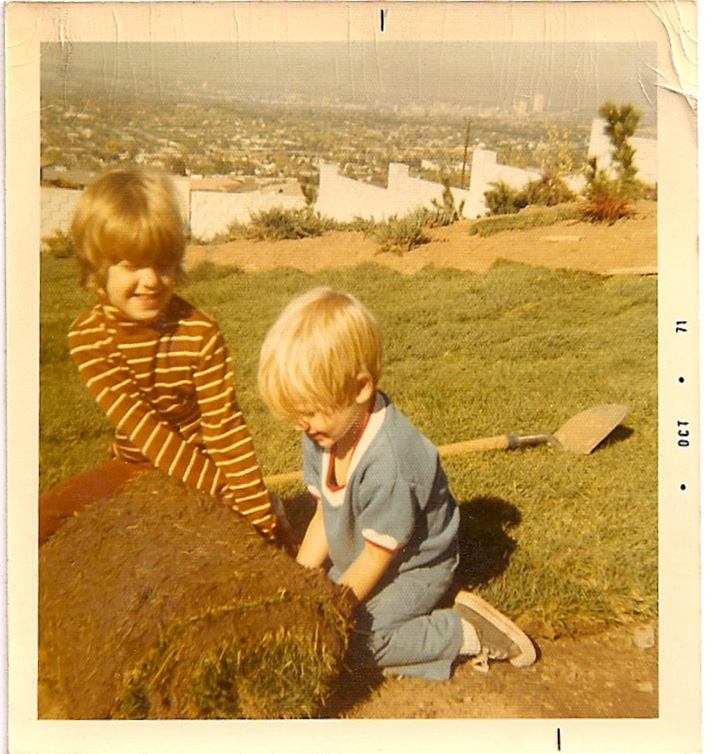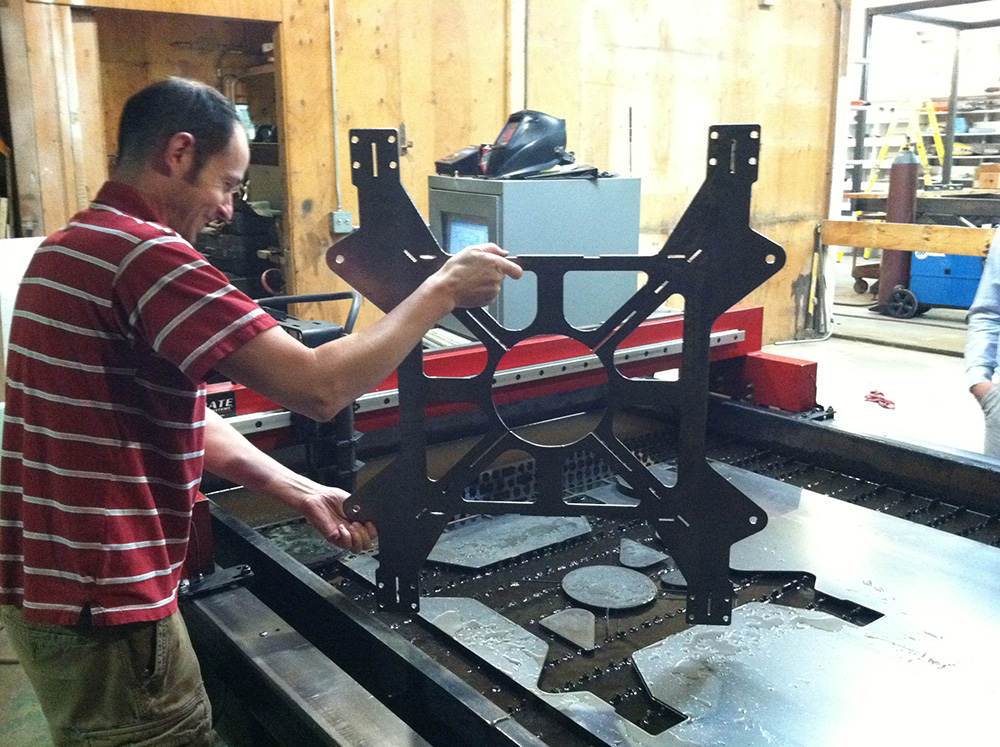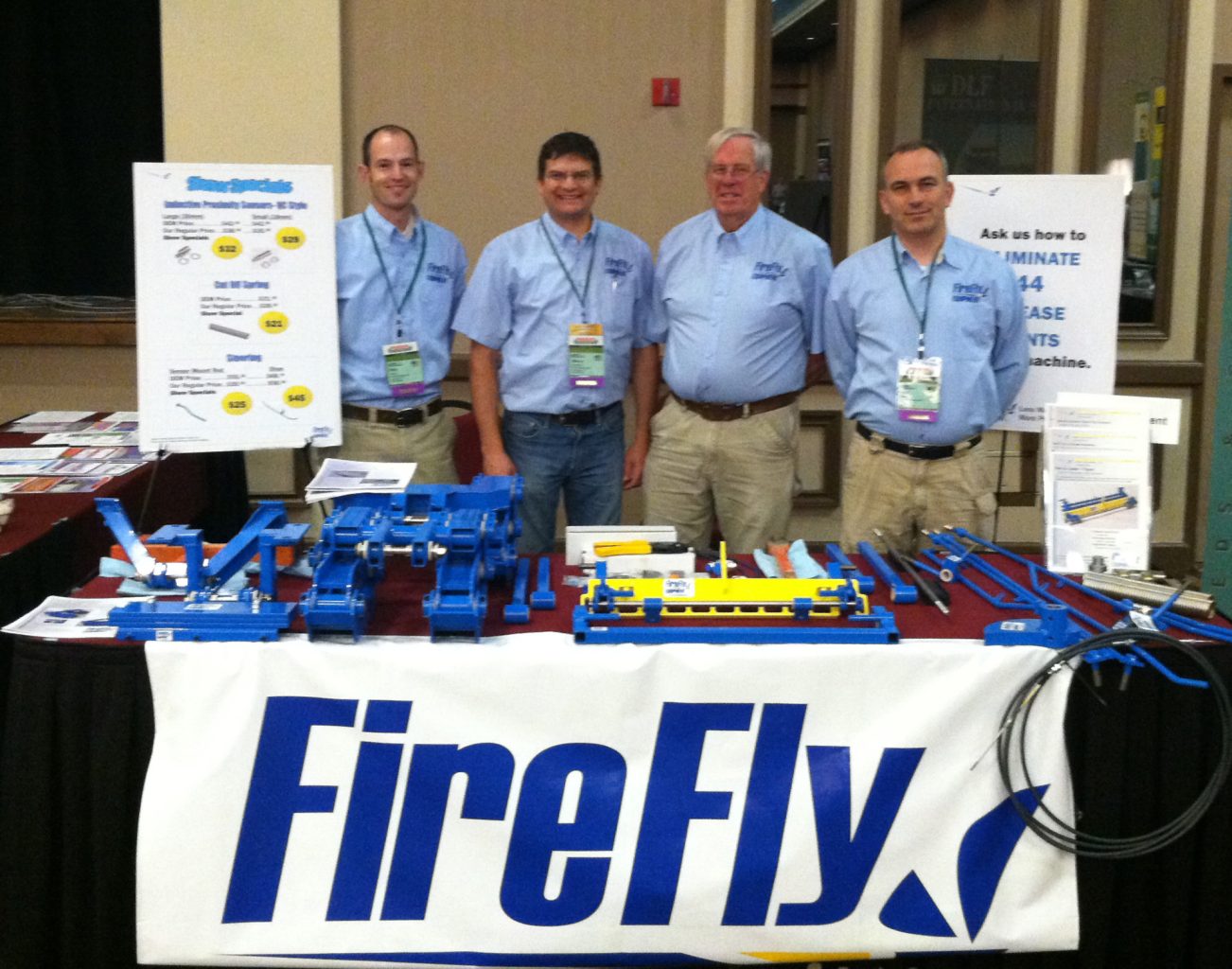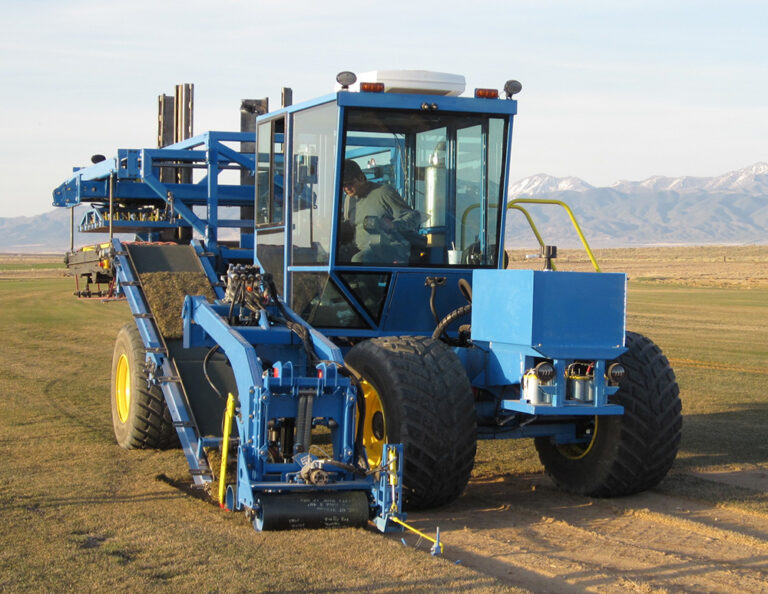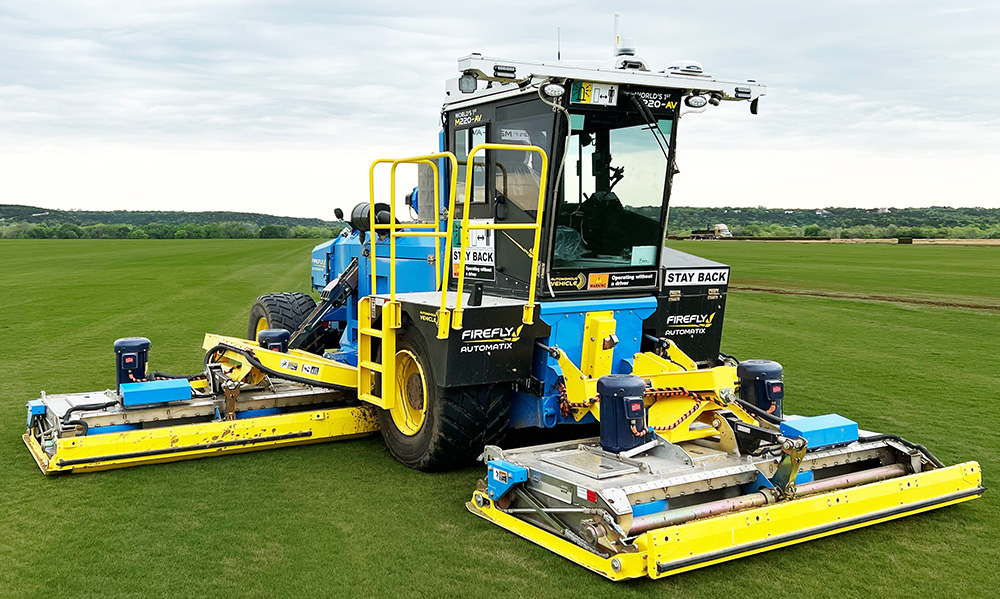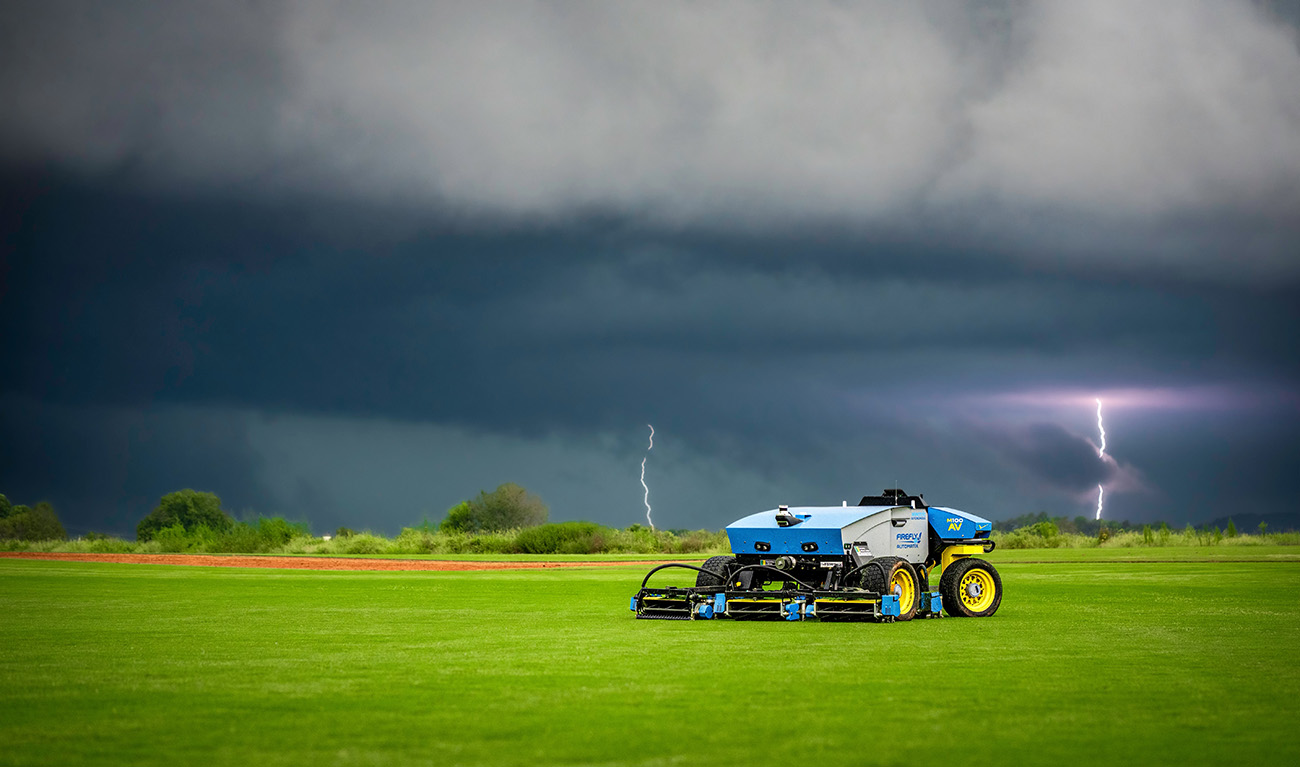November 20, 2023
As featured in Turf Talk, a newsletter by Lawn Solutions Australia
Note: The M100-AV was later rebranded as the AMP-L100.
How do you get from automating window blinds to designing robotic lawnmowers? Programming turf harvesters might not be your first thought, but this was the progression for FireFly Automatix and its founder Steve Aposhian.
At about age 9, Steve was already trying to automate the mundane tasks in his life. One day, he invited his mother to come see something in his bedroom. At his encouragement, and despite noticing the plastic now covering the carpet, she pushed a doorbell newly affixed to his door frame. She was surprised to be met with a spray of water, which Steve excitedly explained was a windshield washer hose he had rigged up to the doorbell.
Then he invited her inside to see how he could turn on his light from his bed with a string. Dripping wet, but being the good sport that she was, she came in to see the light switch control. She also saw how he could open and close his window blinds with a controller for an electric toy car, the car’s axle connected to the blind’s wand.
His mother’s response? “Steven! How wonderful! You have some of Grandpa’s inventive genius!” This was the beginning of a lifelong pursuit to maximize productivity while minimizing labour.
Of course, the need for labour savings reaches beyond that of an innovative child. The number of temporary farm worker positions in the U.S. increased more than seven-fold over the past 17 years, evidence of a shortage of agricultural labour. In Australia, an aging—and therefore retiring—population has given rise to critical labour shortages in agriculture, leaving farmers subject to the political winds of solutions such as the Pacific Australia Labour Mobility (PALM) scheme and the new Agricultural Visa program. A more sustainable solution to staff shortages, automation can stabilize a business while also streamlining its operations.
Agriculture has adapted and progressed technologically to survive throughout time. The work once done by hand tools was later accomplished through literal horse power. Further advances brought mechanization to farming, and now robotics is transforming the industry once again.
Steve Aposhian (right) and his sister Lani (left) laying turfgrass at a young age
Back to our window blind inventor. Steve’s father was a turfgrass farmer, a son of an auto mechanic, with a college degree in botany. Steve grew up laying sod and plotting to get an education so he wouldn’t have to keep laying sod. He also spent countless hours tinkering with the harvesters on the family farm, trying to keep them running.
When he completed his own university education in Mechanical Engineering, Steve was hired by Honda Power Equipment R&D to design and test lawnmowers. He went on to become an expert in software development and controls design.
At this point, Steve’s brothers, Matt and Dan, were running Aposhian Turf Farm and wanted his advice on their new automatically-stacking harvester. They were convinced that improvements could be made to make it last longer. Steve invited Will Decker and Eric Aston, two of the smartest engineers—and farm boys—he knew, to collaborate.
Founding FireFly
At the beginning of 2010, they decided to found a business to sell their improved designs, which were proving to be very successful. FireFly Equipment, known as FireFly Automatix now, started business in the small family farm shop. Their first product was an upgraded depth control system using high performance polymer bearings to decrease maintenance and increase durability. It was received enthusiastically.
Eric Aston building an early part
Eric Aston, Steve Aposhian, Sam Drake, and Will Decker offering FireFly’s improved harvester parts at TPI 2011
A Reimagined Harvester
After more design improvements succeeded, Steve and his engineering partners decided to take a leap of faith and give FireFly their full-time efforts to develop a completely new harvester. In fact, Dr. Samuel Drake, their professor and mentor from the University of Utah, believed in this endeavor so much, he joined his former students in their humble little shop. With experience like working on the lunar module simulator and running the Advanced Manufacturing Lab at “The U” for 22 years, Sam was invaluable. The four engineers not only designed the reimagined harvester, but at first built most of it too.
Automation World described the ProSlab’s “tight synchronization” of its “sophisticated control system.”
And Control Design wrote: “Bringing a high-end control system, programming and mechanical design to FireFly’s automated turf harvesting machine proves technology and automation work well in agriculture applications.”
The harvesters’ automation being described by these publications was really a level of autonomy. Autonomy can be described in a continuum of human assistance. FireFly’s turf harvesters automate several tasks, such as steering, rolling, stacking, and dropping pallets on-the-fly, landing them at Level 2 of autonomy, perhaps leaning into Level 3.
Testing a prototype of the ProSlab harvester in 2012
Debuting over a decade ago, the FireFly ProSlab harvesters were groundbreaking, not just in turf production, but across all of agriculture and heavy equipment. Steve and his team integrated the latest factory technologies, including electric servo motors, with mobile equipment to create a hybrid diesel-electric machine that propelled turf harvesting to a whole new level of automation. While the general appearance may look similar to other turf harvesters, the technology is much more sophisticated, enabling automation in conditions no other harvester had achieved and yielding better reliability, fuel economy, and durability.
On the World Stage
The world took notice, and in 2015, the FireFly team found themselves on the National Instruments keynote stage with the likes of Samsung, Texas Instruments, and Jaguar. The tech world exploded with news about a little company called FireFly.
FireFly was on the cover of OEM Off-Highway magazine. Farm Journal called FireFly a leader “at the vanguard of agricultural IoT [Internet of Things] application.”
This is one of the first, if not the first, agricultural IoT application. There’s nothing out there with this level of autonomy.” – Nick Butler, National Instruments, in Farm Journal
Automation World described the ProSlab’s “tight synchronization” of its “sophisticated control system.”
And Control Design wrote: “Bringing a high-end control system, programming and mechanical design to FireFly’s automated turf harvesting machine proves technology and automation work well in agriculture applications.”
The harvesters’ automation being described by these publications was really a level of autonomy. Autonomy can be described in a continuum of human assistance. FireFly’s turf harvesters automate several tasks, such as steering, rolling, stacking, and dropping pallets on-the-fly, landing them at Level 2 of autonomy, perhaps leaning into Level 3.
Recognizing the potential for more autonomy, that same year (2015) FireFly engineers began development of a driverless mower. At the time, autonomy technology was expensive. After doing a cost analysis, the team decided a smaller mower would be cost-prohibitive and started moving forward with the design of the M220 for turf farms, which cuts a 22-foot (670-cm) wide swath. They applied their achievements in electric hybrid technology to build a manned version, while they continued to test and develop the mower’s autonomy.
In April of this year, the company released its autonomous version of the M220 (called the M220-AV to signify that it’s an Autonomous Vehicle). With its “teach-and-repeat” autonomy, the mower leapfrogged FireFly forward to Level 4 autonomy.
Meanwhile, as autonomy technology developed and expanded across industries and applications, the cost of components dropped significantly. The numbers began to make sense for a smaller autonomous mower. FireFly conducted a market study to evaluate the viability of a 100-inch (254 cm) mower, surveying turf farms, sports fields, and golf courses. They found compelling potential.
Another decision would significantly alter the machine’s design. Concerned with fuel costs and carbon footprints, the organizations surveyed were highly interested in an autonomous mower that is fully electric.
There were more arguments for going all electric. The team at FireFly recognized that traditional combustion machines present challenges to achieve full autonomy in mowing. With their engine radiators and hydraulic heat exchangers that can get clogged with grass clippings, not to mention oil that can leak, traditional machines are harder to leave fully unsupervised.
On the other hand, a fully electric mower is mechanically simpler and well suited to unsupervised operation. It is also easier to monitor the health of all the systems of electric machines. But FireFly has never needed convincing of the benefits of electric. They have proven the value of electric mechanisms for over a decade. They have shown with their harvesters that electric is faster, more reliable and energy efficient, and creates a higher quality product.
With years of expertise in electric systems, FireFly was uniquely prepared to design and build an all-electric autonomous mower. After two years in development, they released the new M100-AV this July. This 100-inch (254 cm) lightweight mower is capable of operating without human input or supervision, attaining the highest level of autonomy.
FireFly’s development of their turf harvesters and manned M220 was in fact the perfect pathway of innovation to a robotic mower that is poised to revolutionize mowing, not only for turfgrass producers, but also for sports fields, golf courses, and municipalities. By eliminating the need for an operator, the M100-AV is projected to alleviate labour pressures and reduce mowing labour costs by 90% and cut overall mowing costs roughly in half. It promises to maximize efficiency, durability, and performance like no other mower in the world.
And the little boy that dreamed up window blind inventions? Steve said: “Our purpose has always been to improve people’s lives. The M100-AV is the culmination of all our team’s experience in one high performance machine that will save customers a huge amount of operational costs.”


